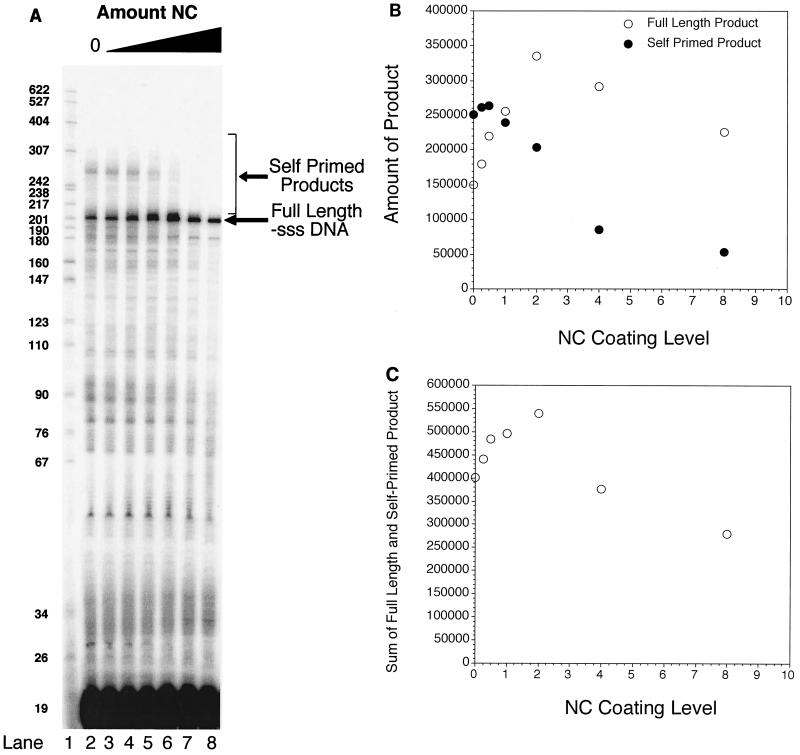FIG. 1.
NC inhibits formation of self-primed products during reverse transcription. (A) A 5′ 32P-labeled 19-base DNA containing the PBS sequence was annealed to RNA containing the genomic HIV-1 R-PBS sequence. RT and either no NC (lane 2) or increasing amounts of NC (lanes 3 to 8) were subsequently allowed to bind. Theoretical coating levels of NC/primer-template were as follows: lane 2, none; lane 3, 0.25-fold; lane 4, 0.50-fold; lane 5, 1.0-fold; lane 6, 2.0-fold; lane 7, 4-fold; lane 8, 8-fold. Reverse transcription was initiated, allowed to proceed for 60 min at 37°C, quenched, and visualized on a 6% denaturing polyacrylamide gel. The positions of the 200-base full-length −sssDNA and self-primed products are indicated at the right. Positions of DNA size markers (in bases) are shown in lane 1. (B) Quantitation of full-length and self-primed product. The amount of full-length 200-base product and self-primed product in panel A was quantitated using a PhosphorImager and plotted as a function of NC coating level, where 1 NC/7 bases is a onefold coating level. (C) Sum of full-length and self-primed products in panel A, quantitated using a PhosphorImager and graphed as a function of initial NC coating level.

